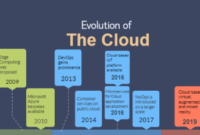Integrating Environmental, Social, and Governance (ESG) Factors
Daftar Isi Artikel
Incorporating Environmental, Social, and Governance (ESG) factors into financial strategies is becoming increasingly important for long-term sustainability. ESG considerations not only enhance corporate responsibility but also align financial performance with broader societal goals. Key areas include:
- Environmental Stewardship: Implement practices that reduce environmental impact, such as energy efficiency, waste reduction, and sustainable sourcing. Environmental responsibility can lead to cost savings and improved brand reputation.
- Social Responsibility: Focus on social initiatives such as fair labor practices, community engagement, and diversity and inclusion. Socially responsible practices foster a positive workplace culture and strengthen stakeholder relationships.
- Governance Practices: Ensure strong governance practices, including transparent reporting, ethical decision-making, and robust risk management. Effective governance enhances credibility and reduces the risk of regulatory and reputational issues.
- ESG Reporting: Develop and publish ESG reports that outline your company’s sustainability efforts, goals, and achievements. Transparent reporting on ESG performance can attract investors and build trust with stakeholders.
Implementing Green Financial Strategies
Green financial strategies involve aligning financial decisions with environmental sustainability. Consider the following approaches:
- Green Bonds: Issue green bonds to raise capital for environmentally beneficial projects. Green bonds fund initiatives such as renewable energy, energy efficiency, and pollution reduction.
- Sustainable Investment: Incorporate sustainable investment criteria into portfolio management. Focus on investments that promote environmental and social sustainability while delivering financial returns.
- Energy Management: Invest in energy-efficient technologies and renewable energy sources to reduce operational costs and environmental impact. Energy management programs can enhance financial performance and sustainability.
- Eco-Friendly Products: Develop and market eco-friendly products and services. Aligning product offerings with environmental values can attract environmentally conscious consumers and create competitive differentiation.
Enhancing Financial Communication and Reporting
Improving Transparency and Accountability
Effective communication and transparency in financial reporting are crucial for building trust and ensuring accountability. Key practices include:
- Clear Reporting: Present financial reports in a clear and comprehensible manner. Use visual aids such as charts and graphs to enhance readability and highlight key metrics.
- Regular Updates: Provide regular updates on financial performance, strategy, and goals. Frequent communication keeps stakeholders informed and engaged with the company’s financial health.
- Stakeholder Engagement: Engage with stakeholders to address their concerns and gather feedback. Open dialogue with investors, employees, and customers fosters trust and alignment.
- Compliance with Standards: Adhere to established accounting standards and regulatory requirements in financial reporting. Compliance ensures accuracy and credibility in financial disclosures.
Utilizing Financial Dashboards and Metrics
Financial dashboards and metrics offer real-time insights into business performance and financial health. Effective use of dashboards and metrics includes:
- Custom Dashboards: Create customized financial dashboards that focus on key performance indicators (KPIs) relevant to your business. Dashboards provide an overview of financial status and performance.
- Real-Time Data: Use real-time data to monitor financial metrics and make informed decisions. Access to up-to-date information allows for timely responses to financial challenges and opportunities.
- Benchmarking: Compare performance metrics against industry benchmarks and competitors. Benchmarking helps identify areas of strength and opportunities for improvement.
- Data Visualization: Employ data visualization techniques to present financial information in an accessible format. Effective visualization aids in understanding complex data and supporting strategic decision-making.
Preparing for Future Financial Trends
Staying Ahead of Technological Innovations
Keeping pace with technological innovations is essential for maintaining a competitive advantage and optimizing financial management. Key areas to watch include:
- Fintech Disruptions: Monitor disruptions in the fintech sector, such as new payment technologies, digital currencies, and blockchain applications. Embracing fintech innovations can enhance operational efficiency and customer experience.
- Artificial Intelligence (AI) Evolution: Stay updated on advancements in AI and machine learning. Emerging AI technologies can offer new capabilities for financial analysis, risk management, and customer interactions.
- Cybersecurity Developments: Invest in evolving cybersecurity solutions to protect financial data and systems. Stay informed about new threats and advancements in cybersecurity practices.
- Regulatory Changes: Keep abreast of changes in financial regulations and compliance requirements. Adapting to new regulations ensures ongoing compliance and mitigates legal risks.
Adapting to Economic and Market Shifts
Economic and market shifts can impact financial strategies and performance. Key strategies for adapting to changes include:
- Economic Forecasting: Utilize economic forecasting tools to anticipate changes in economic conditions, such as interest rates, inflation, and economic growth. Forecasting helps in adjusting financial strategies and planning.
- Market Analysis: Conduct thorough market analysis to understand industry trends, customer behavior, and competitive dynamics. Adapting to market shifts enables businesses to capitalize on opportunities and mitigate risks.
- Scenario Planning: Develop and update scenario plans to prepare for various economic and market scenarios. Scenario planning helps businesses anticipate potential challenges and devise appropriate responses.
- Agile Financial Management: Adopt agile financial management practices to respond swiftly to changing conditions. Flexibility and adaptability are key to navigating uncertainties and achieving financial goals.
Conclusion
Navigating the complexities of business finance requires a multifaceted approach that integrates innovation, sustainability, and strategic planning. By embracing technological advancements, integrating ESG factors, and enhancing financial communication, businesses can position themselves for long-term success and resilience.
A forward-thinking financial strategy that anticipates future trends, adapts to market shifts, and fosters transparency and accountability will drive sustainable growth and strengthen stakeholder relationships. Mastering financial management is not only about achieving short-term goals but also about building a robust foundation for enduring success in an ever-evolving landscape.
As businesses continue to evolve and face new challenges, staying informed, agile, and proactive will be essential for thriving in a dynamic and competitive environment. By prioritizing effective financial practices and embracing innovation, organizations can achieve lasting prosperity and create a positive impact on their stakeholders and the broader community.




